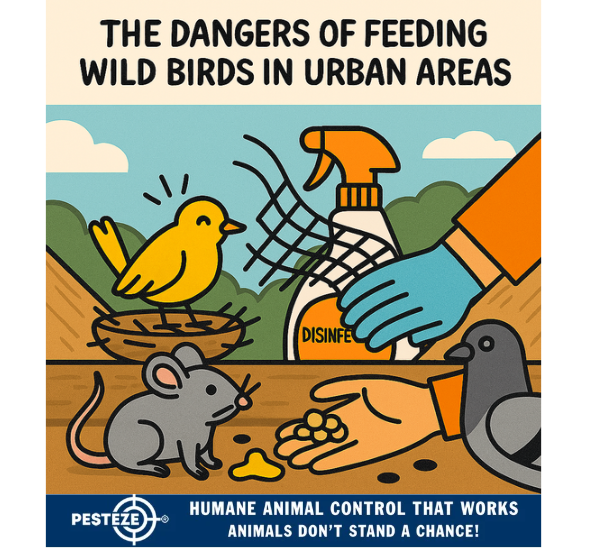THE DANGERS OF FEEDING WILD BIRDS IN URBAN AREAS

THE DANGERS OF FEEDING WILD BIRDS IN URBAN AREAS
SUMMARY
Feeding wild birds in urban areas may seem harmless or even helpful, but it can lead to serious ecological and public health issues. From dependency and overcrowding to disease transmission and property damage, the unintended consequences are far-reaching. This guide explores the risks associated with feeding wild birds in cities and offers responsible alternatives to support avian populations without disrupting urban ecosystems.
FEATURES
-
Overpopulation Risks: Artificial feeding can lead to unnatural flock sizes and increased competition.
-
Disease Transmission: Shared feeding sites promote the spread of avian and zoonotic diseases.
-
Human-Wildlife Conflict: Birds may become aggressive or reliant on human interaction.
-
Environmental Impact: Excess food attracts pests and disrupts local biodiversity.
-
Legal Restrictions: Many cities have ordinances against feeding wildlife for safety reasons.
-
Responsible Alternatives: Support birds through habitat preservation and native plant gardening.
GUIDE DESCRIPTION
While feeding wild birds in urban areas may feel like a kind gesture, it often causes more harm than good. This guide outlines the dangers of this practice and explains why it’s important to rethink how we interact with urban wildlife.
One of the primary concerns is overpopulation. When birds gather in large numbers around feeding sites, it creates unnatural densities that lead to competition, aggression, and stress. These crowded conditions also make it easier for diseases like avian pox, salmonella, and even zoonotic illnesses to spread rapidly among birds—and potentially to humans.
Feeding birds can also alter their behavior. Birds may become dependent on human-provided food, losing their natural foraging instincts. Some species may become bold or aggressive, leading to increased human-wildlife conflict. Additionally, leftover food attracts rodents and insects, contributing to sanitation problems and property damage.
Urban feeding can disrupt local ecosystems. Non-native species may outcompete native birds, and excess food can lead to imbalances in predator-prey relationships. Many municipalities have laws prohibiting wildlife feeding, especially in parks and public spaces, to mitigate these risks.
Instead of feeding, consider planting native shrubs and trees that offer natural food sources like berries and seeds. Install bird baths and nesting boxes to support birds without encouraging dependency. These methods promote healthy, sustainable interactions between humans and wildlife.
By understanding the dangers and choosing responsible alternatives, you can help protect urban bird populations and maintain ecological balance. Thoughtful action ensures that birds thrive naturally—without unintended harm.
- Amy Chang


Comments 0